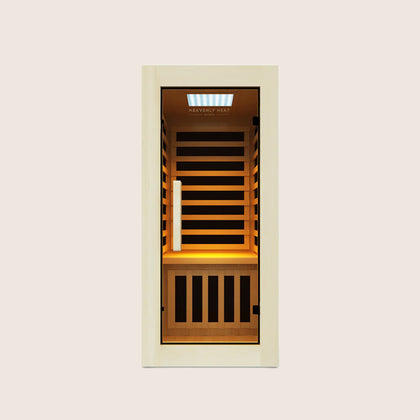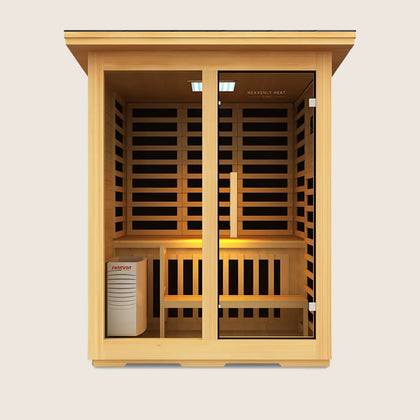How Long Do Hot Tub Covers Last? Lifespan and Care Tips

A hot tub cover does more than just sit on top of your spa, it protects your water, keeps heat in, and saves energy.
But how long can you really expect it to last? From sun damage to heavy use, many factors affect its lifespan. Read on to learn how to make your cover last longer.
Key Takeaways
Know Your Cover’s Lifespan: Most hot tub covers last three to five years, depending on quality and use.
Choose Quality Materials: Heavy-duty foam and UV-resistant vinyl help your cover last longer.
Protect from the Elements: Sun, rain, and snow can damage your cover—use a UV spray and secure it properly.
Maintain Regularly: Clean, handle carefully, and remove standing water to prevent wear and waterlogging.
Watch for Replacement Signs: Cracks, stiffness, fading, or mold indicate it’s time for a new cover.

How Long Do Hot Tub Covers Last?
A hot tub cover typically lasts between three to five years, but its exact lifespan depends on several factors.
The quality of materials and how well it’s made play a big role, higher-quality covers usually provide better protection and last longer.
Foam-filled covers, for example, tend to wear out within that same three-to-five-year range, but heavier-duty models are sturdier and can withstand the elements better, even though they may cost more upfront.
Maintenance is just as important as quality. A cover that’s cleaned regularly and handled with care will hold up longer than one that’s neglected.
Sun exposure is another big factor. Direct UV rays can cause the vinyl to fade, crack, or lose flexibility over time.
To slow this process, applying a UV protectant spray every few weeks helps keep the cover in good shape and prevents premature aging.
By choosing a durable cover and maintaining it properly, you can maximize its lifespan and keep your hot tub efficient and well-protected.
What Is a Hot Tub Cover and Why Is It Important?
A hot tub cover is a protective lid designed to fit over a spa or hot tub, shielding the water from debris, dirt, and weather exposure.
By trapping heat and reducing evaporation, it helps maintain water temperature and lowers energy costs.
Beyond protection and efficiency, hot tub covers also enhance safety by preventing accidental entry and can extend the overall lifespan of the spa.
Types of Hot Tub Covers
Standard Vinyl Covers: Affordable and common, these covers provide basic protection from dirt, leaves, and debris.
Insulated Foam Covers: Designed to retain heat, helping reduce energy costs and keep water warm for longer.
Hard-Shell Covers: Durable and sturdy, offering excellent protection against harsh weather and accidental damage.
Soft or Fabric Covers: Lightweight and easy to handle, but offer less insulation and durability compared to other types.
Automatic or Motorized Covers: Convenient and easy to use, these covers open or close with the push of a button.
Floating Covers: Simple covers that float on the water surface to reduce evaporation and heat loss.
Factors That Affect the Lifespan of a Hot Tub Cover
Quality of Materials
Hot tub covers last longer when made from high-quality vinyl and dense foam, which resist wear and cracking.
You can check quality by feeling the thickness, inspecting stitching, and verifying the foam type.
Premium covers handle weight and weather better and typically outlast budget options, reducing the need for frequent replacements.
Frequency of Use
Frequent hot tub use accelerates cover wear. Daily lifting, steam exposure, and constant opening can cause sagging, weak spots, and faster condensation buildup, increasing mold or mildew risk. Heavy users may need to replace the cover sooner. Proper care slows this process.
Sunlight and UV Exposure
Sunlight damages hot tub covers over time. UV rays break down vinyl, causing cracking, fading, and stiffness.
Even premium covers can weaken under constant sun exposure, reducing heat and moisture retention.
Using a UV-protective spray or placing the hot tub in shade can extend the cover’s lifespan.
Climate and Weather Conditions
Weather affects cover durability. Heat can dry out foam and vinyl, while freezing temperatures make materials brittle.
Snow adds weight, causing sagging or tears. High humidity can promote mold, and strong winds can shift or damage covers.
In severe climates, use winter covers or UV shields and perform regular inspections to extend cover life.
Maintenance and Cleaning
Clean your hot tub cover monthly with a gentle soap and water solution to prevent mold, mildew, and material breakdown.
Avoid harsh cleaners. Use a hot tub cover protectant to preserve flexibility and prevent cracks.
Check for water accumulation and trim excess foam exposure. Consistent care extends the cover’s lifespan.

Handling and Weight Stress
Incorrect lifting, awkward carrying, or sitting on the cover can damage seams and foam. Environmental weight, like pooled water or snow, adds strain.
Use a cover lifter and distribute weight evenly during cleaning or repositioning to maintain shape and function.
Chemical Exposure from Water
Hot tub chemicals like chlorine and bromine can cause fading, brittleness, or foam breakdown.
Imbalanced pH accelerates wear. Signs of chemical damage include discoloration, stiffness, and small cracks. Monitor water chemistry and rinse the cover occasionally to prolong its life.
Signs It’s Time to Replace Your Hot Tub Cover
Cracks and Tears: Damage lets heat escape and reduces protection.
Waterlogged or Moldy: A soggy or moldy cover can’t keep your tub clean or insulated.
Too Heavy or Stiff: Difficult covers make everyday use frustrating.
Warped Shape: A bent or uneven cover won’t seal properly.
Faded or Sun-Damaged: UV wear weakens the material, causing faster breakdown.
Rising Energy Costs: Poor insulation means your tub is losing heat and costing more.
Bad Smells: Odors are a sign of mold, mildew, or decaying material.
FAQs
How many years should a hot tub cover last?
On average, a hot tub cover lasts between three to five years, though its actual lifespan depends on the material, how often it’s used, and the care it receives. Heavier-duty covers usually last longer thanks to their sturdiness, but they also tend to cost more upfront. Environmental factors play a big role in longevity, sun exposure can fade and crack vinyl, rain and snow can add weight and cause sagging, and strong winds may even damage or dislodge the cover. Extreme temperatures, whether hot or cold, also speed up wear and tear. Manufacturer warranties typically range from one to five years, often reflecting the quality of materials and construction, with higher-density foam and UV-resistant fabrics offering more durability. Proper maintenance can make a big difference: cleaning regularly, removing standing water, applying UV protectant, and keeping the cover secured all help extend its life. With the right care, you can get the most out of your investment and keep your hot tub protected for years.
Do expensive hot tub covers last longer?
Yes, expensive hot tub covers last longer due to superior materials like marine-grade vinyl, thick high-density foam, and robust vapor barriers. Enhanced construction, better insulation, and specialized designs resist UV damage, water absorption, and wear, offering improved durability, energy savings, and extended lifespan compared to standard covers.
What causes hot tub covers to get heavy and waterlogged?
Hot tub covers get heavy and waterlogged when their foam core absorbs water due to a broken vapor barrier or damaged vinyl. Causes include poor water chemistry, age, physical damage, and chloramines, leading to trapped moisture, increased weight, reduced insulation, and potential mold or mildew growth.





























